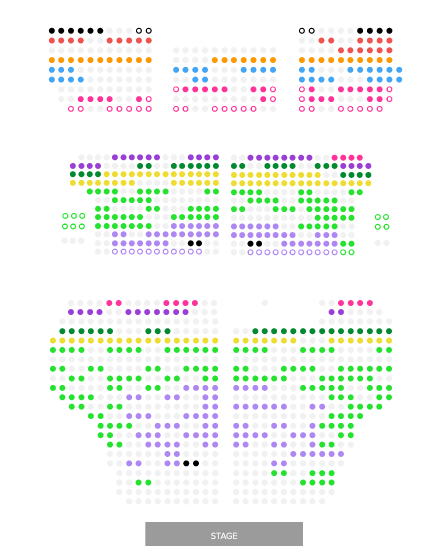Lyn Gardner recently wrote in The Stage about how stashes of old theatre ticket stubs can unleash a “tsunami of memories” for her. Each, of course, represents not just a night of your life that you spent in a theatre, but also tells you exactly where you sat.
For many years — until my collection became too overwhelming to maintain, in terms of its sheer size and the amount of space that was required to hold onto it — I used to hold onto every theatre programme I got, and I’d also long ago started to fold the ticket stub into it, so I’d also know when I saw it, too, and in which seat.
I used to tell myself that this collection — which dated from when I arrived in London in 1979 — would be a useful reference source; and that was certainly true until the mid-1990s. But then the internet arrived, and I can’t remember the last time I actually dug a programme out to find a bit of information; instead, google is my living theatre programme.
So I finally, initially with some reluctance but then with relief, decided to let go of (most of) my programme collection, donating them first to Mander and Mitchenson (the theatre collection now housed at Bristol University), and now passing over more recent programmes to the library at ArtsEd, where I also have taught for the last eight years. (I’ve held onto a few programmes of shows that mean something really special to me).
I’ve done the same thing with play scripts: as a critic, you’re often given the text of a play with your programme, which certainly helps if you want to quote a line accurately, instead of trying to decipher your hastily transcribed notes written in the dark, if you’ve managed to catch the line fully.
But now that I don’t hold onto programmes or even ticket stubs, where do my theatre memories reside, in a physical sense apart from in my mind?
And here’s my answer: it is in the theatre seating plans that show the layouts to every theatre. These, too, are now usually available online, usually on the venue’s website, to aid customers in selecting seats. But there are a few physical outlets for these, too. Quite a few years ago now, I actually co-wrote one of these seating guides, in collaboration with my colleague Roger Foss, for Harden’s (pictured below, whose main business is publishing restaurant guides).
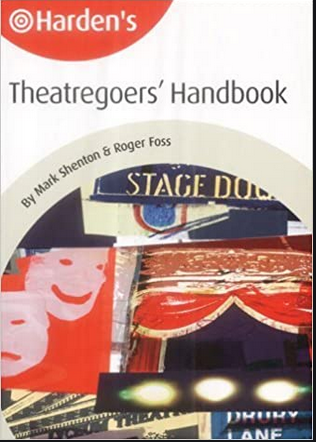
But that has long gone out of date (and out-of-print; there’s a single copy available on Amazon, for the princely sum of £899.72, which may very well be more than the amount of money I made for writing it) . Many (but sadly not all!) theatres have been re-seated since we published that book, so the seating layouts may have changed. And of course, new venues have also opened since then, like the Bridge.
I’ve long been a fan and champion of one website in particular, https://www.theatremonkey.com/, which as well as the seating plans, has detailed advice on which seats are actually best at different price points, and which seats are problematic. This is based partly on many years of research by the publisher, as well as crowd-sourcing information supplied by visitors to the site.
Interestingly, as the age of premium pricing arrived, many theatres actually used Theatremonkey’s own recommendations to identify which seats should be designated as premium!
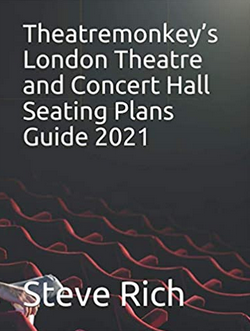
And given that we’re not currently able to actually visit theatres at all, I’ve taken a particular vicarious pleasure in ordering the latest updated version of the print edition of Theatremonkey’s London Theatre and Concert Hall Seating Plans Guide 2021. Looking at the 60+ plans, I can visualise each auditorium — and remember different locations I’ve sat in.
But it also includes venues that have recently been reconfigured that I’ve not yet been to, like the new seating plans for the Theatre Royal, Drury Lane and Trafalgar Theatre (formerly Trafalgar Studios, for its entire existence my least favourite auditorium in all of London, so I’m relieved that it has now been turned back into the two-level auditorium it used to be), based on the plans from which tickets are being sold to the first scheduled productions there. Some venues, like the Bridge and Old Vic, now have different configurations, depending on the production; and the new book also offers these variations.
Alongside the seating plans, Theatremonkey’s book also provides editorial notes on the seating in each area of the theatre, including comfort factors based on height “Legroom is tight in rows A and L” of the dress circle in the Sondheim Theatre, for instance; “it is acceptable for those up to 5ft 9 or so in other rows”. The same theatre’s slip seats in the dress circle, are also comprised: “no slip seat will suit those over 5ft 7”; while for the upper circle slips, the description says it all: “cramped quartet of seats in the front corners of the circle. Not a first pick even at a low price.” (Seating plan for the Sondheim below is from the venue’s own sales site, not Theatremonkey, and show that those cramped slip seats in the dress circle are being sold at £97.50 and £67.50).
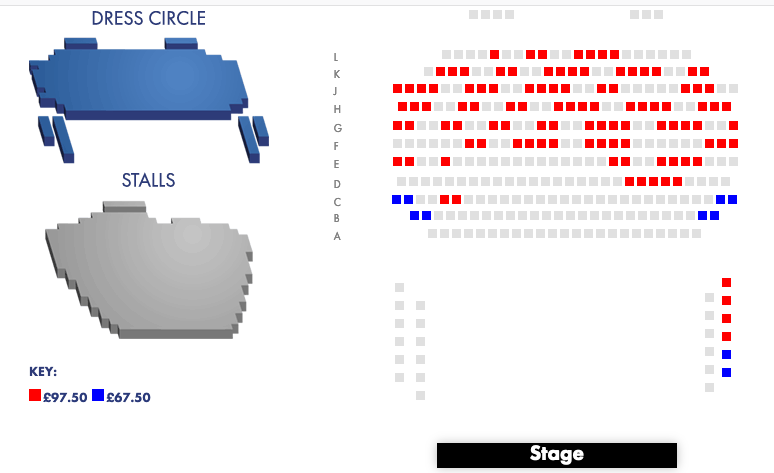
What’s interesting about this note is that this is not an ancient venerable theatre, but one that was completely refurbished and reseated in 2019, with Les Miserables temporarily shut down that summer (and an all-star concert version opening up next door at the Gielgud during its closure, before re-opening that autumn).
I’m surprised that Cameron Mackintosh, who prides himself on the elegance and physical beauty of his refurbished theatres, has allowed these sorts of compromises to be made. And it’s why we need invaluable independent observers like Theatremonkey to report on this.
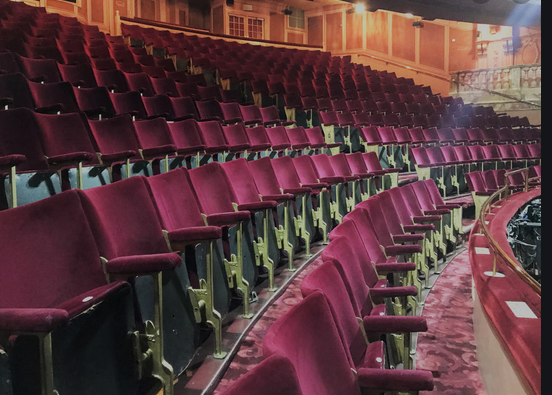
I hope some of the older theatres will also up their game as a result of having their shortcomings (in every sense) listed here. The Shaftesbury completed an extensive backstage refurbishment in 2015, strengthening the grid and increasing the load capacity from 12 to over 30 tonnes, and adding a new extension with new dressing rooms and office accommodation. But nothing was done to the ancient seats (pictured above, in all their rickety glory, in the dress circle). As Theatremonkey reports, “This theatre’s seats are old, narrow, and quite low to the floor. This restricts personal space in all directions.”
There are other gems of advice, like this one for the Arts Theatre in Great Newport Street: “Many are surprised by the ancient auditorium seats. They are even more surprised by the toilet facilities. It is worth buying something at the nearby McDonalds to use theirs, is the handed-down wisdom.”
But my absolutely favourite line in the book is right at the front:
“For everybody in the arts world who had everything taken away from us in 2020. This is our proof of who we are and always will be.”
I’ve barely been inside a theatre for a full year. But this book reminds me of some venues I love so much — and a few that I’ve sometimes loved to hate.

